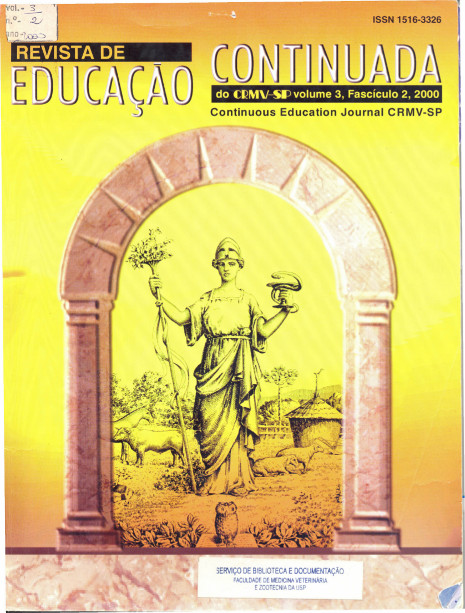Complexo teníase humana - Cisticercose bovina e suína II - Cisticercose bovina e suína
Conteúdo do artigo principal
Resumo
A cisticercose tem sido considerada uma das mais importantes zoonoses conhecidas, não apenas pelos agravos à saúde animal e consequentes implicações econômicas, mas também pela gravidade da doença na população humana. Seu agente causal é representado pela forma larvar da Taenia solium e da Taenia saginata. O presente artigo focaliza a história natural e consequente prevenção da doença, tendo como base a relação interativa existente entre as formas adulta e larvar dos referidos parasitas e seus correspondentes hospedeiros, cuja apreciação impõe uma abordagem dicotômica e complementar dos mecanismos de transmissão do complexo teníase - cisticercose, a saber: sentido animal x homem (teníase), apresentado no artigo anterior, e sentido homem x animal(cisticercose), indissociáveis, no contexto holístico da abordagem, enfatizando: a) o papel dos portadores de cisticercose na transmissão da teníase humana; b) o significado do curso silencioso da doença e da inespecificidade das manifestações clínicas; c) a importância de um sistema de vigilância epidemiológica, objetivando a identificação dos grupos de risco e a correspondente intervenção preventiva; d) as ações preventivas diretas, que estariam apoiadas: 1) no diagnóstico e tratamento dos portadores humanos da teníase, subsidiado operacionalmente pela Inspeção Veterinária, detectando os casos de cisticercose, associando-os com os rebanhos de origem dos animais afetados e notificando ao sistema de saúde humana; 2) no saneamento ambiental, particularmente orientado para o adequado destino e tratamento dos excretas humanos; 3) na proteção inespecífica dos suscetíveis, com práticas de manejo sanitário, nas populações animais e de higiene pessoal e alimentar para a população humana; 4) na participação comunitária, orientada de forma segura e pontual acerca dos procedimentos individuais e conjunturais de prevenção.
Detalhes do artigo
Edição
Seção
1. Autores mantém os direitos autorais e concedem à revista o direito de primeira publicação, com o trabalho licenciado sob a Creative Commons Atribuição-NãoComercial-SemDerivações 4.0 Internacional
2. Autores têm autorização para assumir contratos adicionais separadamente, para distribuição não-exclusica da versão do trabalho publicada nesta revista (ex.: publicar em repositório institucional ou como capítulo de livro), com reconhecimento de autoria e publicação inicial nesta revista.
3. Autores têm permissão e são estimulados a publicar e distribuir seu trabalho online (ex.: em repositórios instituicionais ou na sua página pessoal) a qualquer ponto antes ou durante o processo editorial, já que isso pode gerar alterações produtivas, bem como aumentar o impacto e a citação do trabalho publicado (Veja O Efeito do Acesso Livre);
